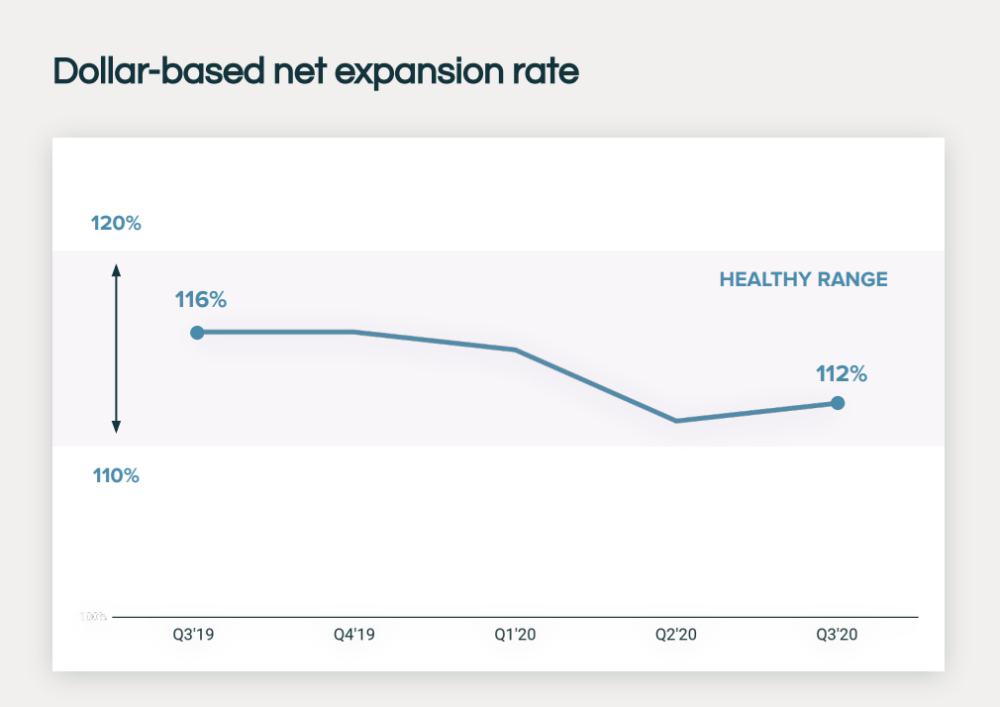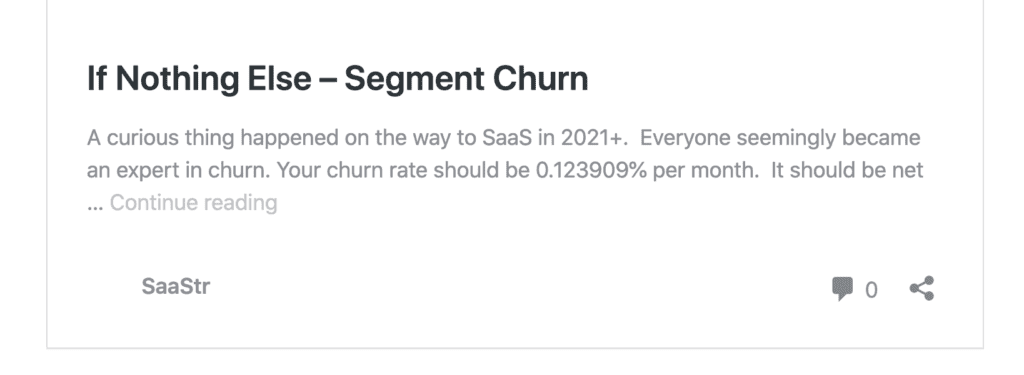After the early days — most. That’s just math.
Of course, it varies. But one thing that is almost always true, is you get more renewals, more upsells, and more net revenue retention from your largest customers.
- Squarespace is almost all not just SMB, but self-service. Their new revenue retention is about 85%.
- HubSpot is almost all small businesses, but at a higher price point ($10k) that is sold directly and through channel partners. As a best-of-breed player, its net revenue retention is about 100%.
- Shopify sells mainly to SMBs and is at about 100%, and driving to 110% as merchant services become stickier and stickier.
- Zendesk has a mix of customers at 120% at IPO, down a smidge to 116% after IPO and 112% after Covid:
- Box has small, medium and large customers. Its net revenue retention at IPO was about 130% and the majority of its new bookings come from its existing customers.
- Twilio was 150% at IPO and is still at 140% today.
- Today, 73% of Salesforce’s new bookings come from its installed base.
More here: Public SaaS Company Disclosure Metrics for Retention and Renewal Rates
So …
If you are selling mainly to small businesses, roughly, 80% net revenue retention is good, 90% is strong, 95% is Best of Breed.
If you are selling to enterprises, 130–140% net revenue retention is very strong.
For a blended model (S, M, and L), 120% is strong a la Zendesk.
Whatever it is, measure it. Segment it. Resource it.
And drive it up.
(note: an updated SaaStr Classic answer)



